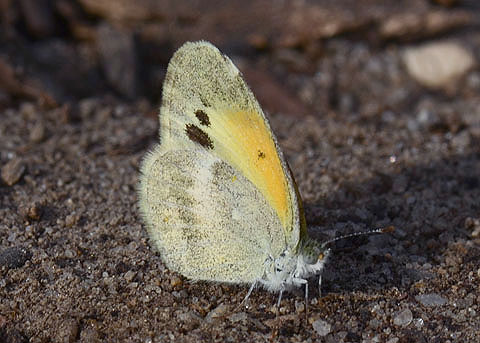 San Mateo Firebreak, Christianitos Road, San Clemente, Orange County, CA. 10/31/12. © Peter J. Bryant. |
Dainty Sulphur Nathalis iole Lepidoptera: Pieridae Back to Butterflies of Orange County, California |
 San Mateo Firebreak, Christianitos Road, San Clemente, Orange County, CA. 10/31/12. © Peter J. Bryant. |
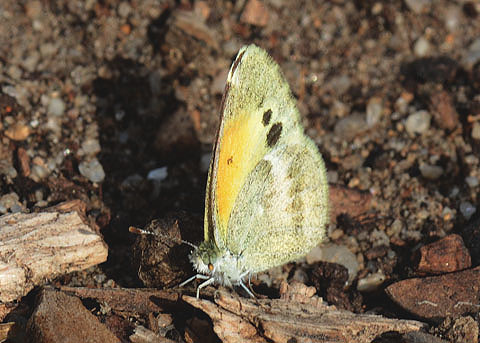 San Mateo Firebreak, Christianitos Road, San Clemente, Orange County, CA. 10/31/12. © Peter J. Bryant. |
 San Mateo Firebreak, Christianitos Road, San Clemente, Orange County, CA. 10/31/12. © Robert Gorman |
 San Mateo Firebreak, Christianitos Road, San Clemente, Orange County, CA. 10/31/12. © Robert Gorman |
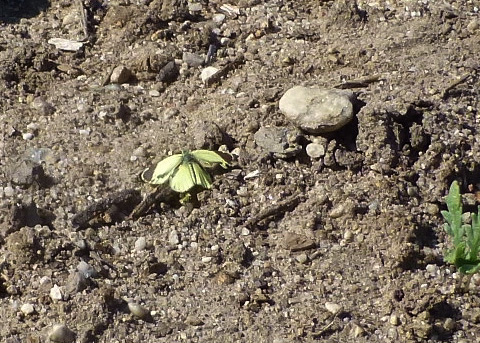 Female advertizing to male. San Mateo Firebreak, Christianitos Road, San Clemente, Orange County, CA. 10/30/12. © Robert Gorman |
 San Mateo Firebreak, Christianitos Road, San Clemente, Orange County, CA. 10/30/12. © Robert Gorman |
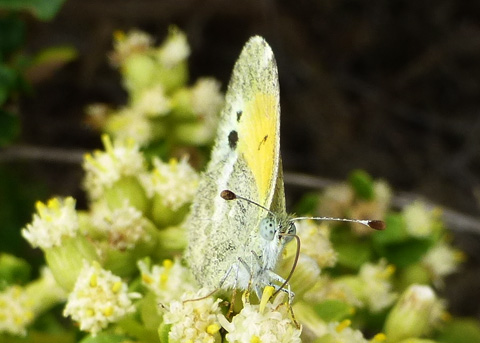 San Mateo Firebreak, Christianitos Road, San Clemente, Orange County, CA. 10/18/12. © Robert Gorman |
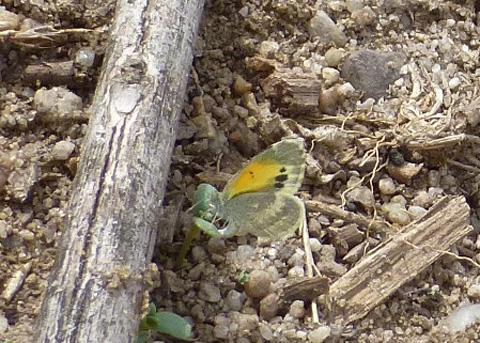 Ovipositing. San Mateo Firebreak, Christianitos Road, San Clemente, Orange County, CA. 10/18/12. © Robert Gorman |
| Habitats, Behavior: The Dainty Dwarf is rather low flying and easily caught. It is never common in Orange County. Distribution: This diminutive sulfur has a rather spotty distribution, not at all indicative of the larval foodplant distribution. The largest colonies in Orange County evidently occurred in the Lemon Heights-Red Hill area of Tustin. No recent records for these colonies exist, and it appears that they have been exterminated. It would be interesting to determine what influences the abundance and distribution of this species since the presence of the larval foodplant does not necessarily indicate the presence of the butterfly. Larval Foodplants: Bidens pilosa (Beggar-ticks) seems to be the predominant larval foodplant. Ehrlich and Ehrlich (1961) report chickweed (Stellaria spp.) and Wright (1906) reports storksbill (Erodium spp.), both of abundant occurrence in Orange County. Emmel and Emmel (1973) also list garden marigold (Tagetes sp.). Other Remarks: Erodium, Stellaria and Bidens are all introduced weeds and are found most often in disturbed areas, sometimes even backyards. Yet, the Dainty Dwarf Sulfur in Orange County has thus far been captured in relatively undisturbed areas, where its larval foodplants occur in lower densities than in many other areas. Perhaps the scarcity of foodplant in these undisturbed areas account for the equally rare occurrence of the butterfly, and its absence in lowland localities with sufficient larval foodplant may be due to its low dispersibility from rather stable mountain footholds. Also, Stellaria and Erodium, if they are valid records, might be utilized in laboratory situations, but not in nature, Bidens pilosa being the only preferred foodplant. This could explain the scarcity of Nathalis iole. It is not known if this butterfly occurred in southern California before its present larval foodplant(s) were introduced. If so, iole must have utilized an unidentified native plant. From Orsak, L. J. (1977). The Butterflies of Orange County, California. Center for Pathobiology Miscellaneous Publication #3. University of California Press, New York. 349pp. Return to Butterflies and their larval foodplants |
|
